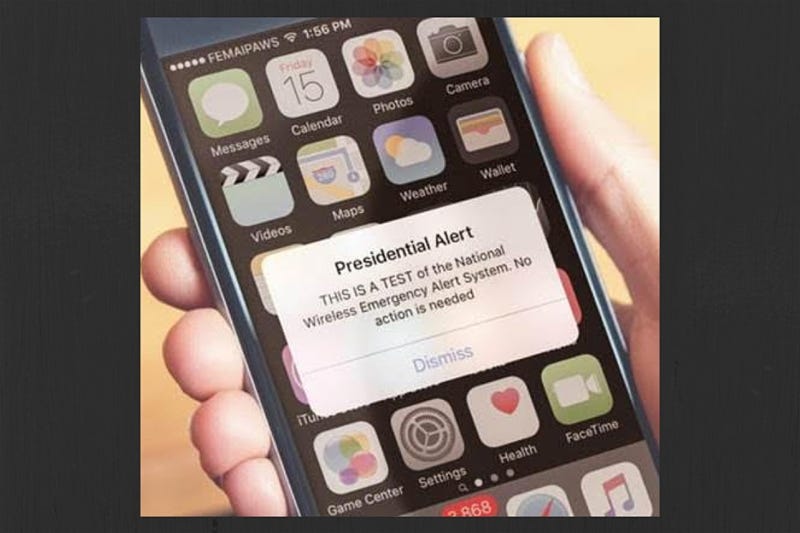![[CONTRIBUTED PHOTO]](http://127.0.0.1/wordpress/wp-content/uploads/2022/01/ghows-DA-762a8e32-9713-1dde-e053-0100007fcd8e-9132e884.jpeg)
The Federal Emergency Management Agency (FEMA), in coordination with the Federal Communications Commission (FCC), will conduct a nationwide test of the Emergency Alert System (EAS) and Wireless Emergency Alert (WEA) Sept. 20.
The WEA portion of the test commences at 1:18 p.m. and the EAS portion follows at 1:20 p.m. The test will assess the operational readiness of the infrastructure for distribution of a national message and determine whether technological improvements are needed. This is the first national WEA test message sent to WEA-compatible cell phones and the fourth EAS nationwide test sent via broadcast media.
The WEA test will be sent through IPAWS at 1:18 p.m. Cell towers will broadcast the WEA test for approximately 30 minutes. During this time, cell phones that are switched on and within range of an active cell tower should be capable of receiving the test message. FEMA will send one WEA message to mobile devices and because the WEA message is a presidential alert, users will not be able to opt out of receiving the message, even if they have deactivated alert notifications in their mobile devices. The WEA message will display on mobile devices as a presidential alert and will read:
"This is a test of the National Wireless Emergency Alert System. No action is needed."
-
The WEA system is used to warn the public about dangerous weather, missing children, and other critical situations through alerts on cell phones. It allows customers whose wireless provider participates in WEA and who own a WEA compatible wireless phone to receive geo-targeted alerts of imminent threats to safety in their area through unique tones and vibration.
-
WEAs can be sent by state and local public safety officials, the National Weather Service, the National Center for Missing and Exploited Children, and the president of the United States.
-
WEAs can be issued for three alert categories – imminent threat, AMBER, and presidential.
-
WEAs look like text messages, but are designed to get your attention and alert you with a unique sound and vibration, both repeated twice.
-
WEAs are no more than 90 characters, and will include the type and time of the alert, any action you should take, as well as the agency issuing the alert.
-
WEAs are not affected by network congestion and will not disrupt texts, calls or data sessions that are in progress.
-
Mobile users are not charged for receiving WEAs and there is no need to subscribe.
The EAS test at 1:20 p.m. is scheduled to last approximately one minute and is made available to EAS participants including radio and television broadcasters, cable systems, satellite radio and television providers, and wireline video providers. The test message will be similar to regular monthly EAS test messages with which the public is familiar:
"This is a test of the National Emergency Alert System. This system was developed by broadcast and cable operators in voluntary cooperation with the Federal Emergency Management Agency, the Federal Communications Commission, and local authorities to keep you informed in the event of an emergency. If this had been an actual emergency an official message would have followed the tone alert you heard at the start of this message. A similar wireless emergency alert test message has been sent to all cell phones nationwide. Some cell phones will receive the message; others will not. No action is required."
Receiving preparedness tips and timely information about weather conditions or other emergency events can make all the difference in knowing when to take action to be safe. More information on the Integrated Public Alert and Warning System and Wireless Emergency Alerts is available at www.ready.gov/alerts.
This article originally appeared on Santa Rosa Press Gazette: Nationwide alert test coming
